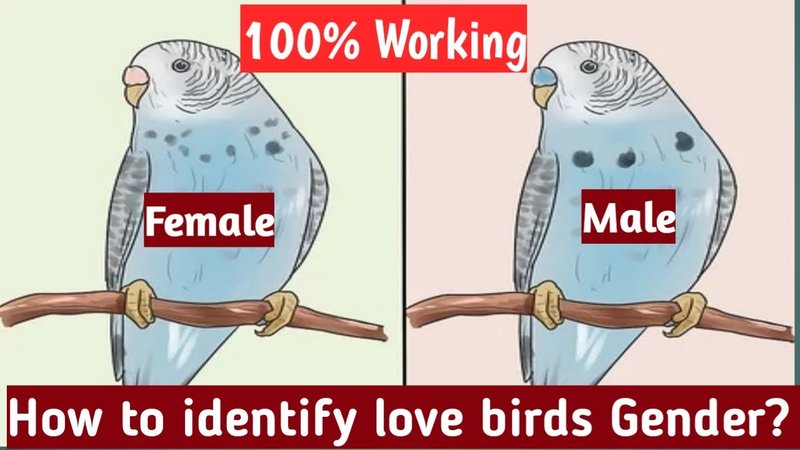
Here’s the thing: male and female lovebirds don’t wear name tags or badges. Instead, they have a few subtle physical and behavioral differences that can help you identify them. If you’re new to lovebirds, don’t worry! I’ll walk you through the details step by step, making this as simple as sharing a cup of coffee with a friend. Let’s dive in!
Understanding Lovebird Basics
Before jumping into the differences, let’s quickly cover what lovebirds are. These small, social parrots are known for their affectionate behavior and playful antics. Typically, lovebirds are around 6 to 7 inches long and come in various colors, including green, yellow, and peach. They thrive on companionship, which is why many pet owners keep them in pairs.
Now, if you’re eager to understand the differences between male and female lovebirds, knowing the basic anatomy and behavior can help set the stage. Both genders are equally vocal and social, often bonding closely with their owners and each other. But that’s where the similarities end when you start looking closer.
Physical Differences
The most noticeable way to tell male and female lovebirds apart lies in their physical characteristics. While both look similar, there are a few telltale signs.
Coloration and Markings
One of the first things you might notice is the difference in coloration. Male lovebirds tend to have brighter, more vivid colors compared to females. For instance, green lovebirds often have a more intense, vibrant hue in males. Female lovebirds might be slightly duller, which is a result of the way they display their feathers.
Now, if you have a lovebird that’s a mutation—like a Lutino or a Pied—the differences can be less pronounced. In these cases, you really have to look for other signs.
Beak Shape and Size
Another feature to examine is the shape and size of their beaks. Generally, males have larger, more pronounced beaks than females. This difference can be subtle but is often noticeable if you have both a male and female to compare side by side.
In lovebirds, the beak isn’t just for eating; it’s also a part of their vocalization skills. So, a bigger beak can often mean a louder bird, which is something to think about if you’re looking for a vocal companion!
Behavioral Differences
Apart from physical traits, *behavior* can also provide clues. Male and female lovebirds often exhibit different behaviors, especially when in a pair or when they feel threatened.
Social Behavior and Affection Levels
Males usually showcase more outgoing and affectionate behavior. They might puff up their feathers, sing, and engage in playful antics to get your attention. If you see one actively showing off or trying to impress you or another bird, it’s likely a male.
Females, on the other hand, tend to be more reserved. They may still be affectionate but usually show it in quieter, more subtle ways. Don’t get me wrong—females can be very loving too; they just express it differently!
Nesting and Territory Behavior
When it comes to nesting, females are the primary builders. If your lovebirds are in a safe environment and you provide them with nesting materials, you might see your female becoming protective over certain spots or items. Males will usually play a supportive role by helping to gather materials and keeping the area secure.
This behavioral difference can be useful when you’re trying to determine the gender of your lovebirds, especially if you notice one is hovering around your handmade nesting box more than the other.
Vent Examination
If you’re serious about confirming the gender of your lovebirds, there’s a more direct—but less commonly used—method called the vent examination.
How to Examine the Vent
To do this safely, you’ll want to gently hold your lovebird and look at its vent area, which is located just below the tail.
– Males typically have a more rounded vent, while females have a slightly more elongated opening.
– This method requires care and should only be done if you’re comfortable handling your bird and have experience. It’s best to consult with a veterinarian if you’re unsure.
Remember, this method isn’t for everyone, and if you’re just looking for fun clues, the physical and behavioral traits are much easier to observe and enjoy!
Color Mutations and Variations
As I mentioned before, lovebirds come in various color mutations. If you’re working with a specific type, these differences can sometimes blur the lines a bit.
Common Color Mutations
Here are a few popular color mutations you might encounter:
- Lutino: A yellow and white combination that can make it tricky to identify gender based solely on color.
- Pied: This mutation can feature a blend of colors in a patchy pattern, complicating the visual identification.
- American Peach: A softer coloration where the distinctions can be subtle, making behavior even more important to observe.
In cases where color mutations come into play, paying close attention to personality and behavior can help you make a more accurate guess about which lovebird is which.
Final Thoughts on Identifying Lovebird Gender
So, there you have it! Understanding how to tell male and female lovebirds apart is about observing a mix of physical and behavioral traits. Watching your lovebirds interact can be as entertaining as it is informative.
If you’re still unsure, don’t hesitate to consult an avian vet or a seasoned breeder for guidance. These experts can provide deeper insights and even help with the vent examination if you’re interested in taking that route.
Whether you’re a new owner or looking to expand your flock, knowing how to identify male and female lovebirds can enhance your experience. It can also enrich the lives of your feathered friends, leading to happier, healthier relationships. Enjoy the journey of getting to know your lovebirds; they truly are a joy to have around!

